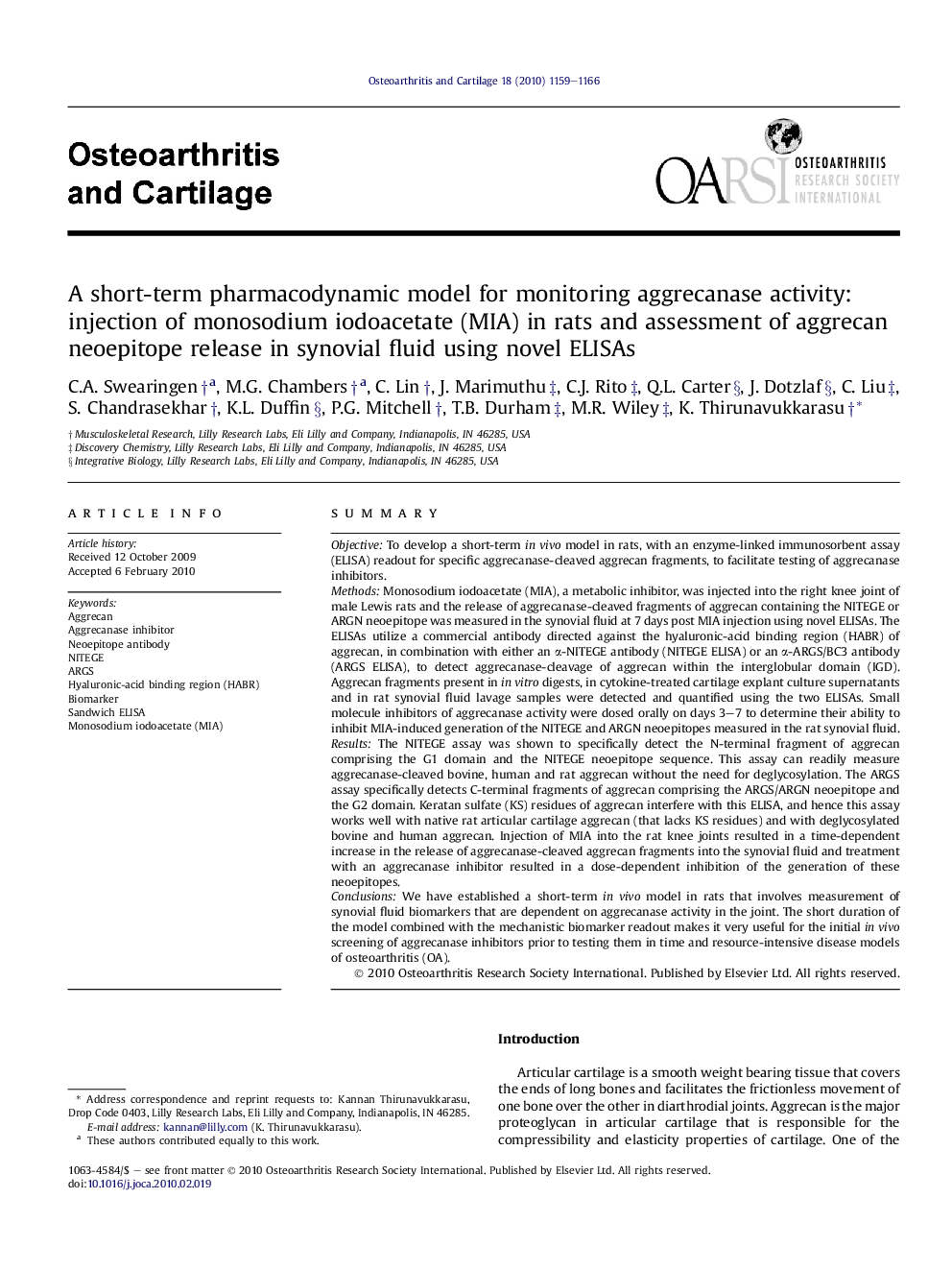| کد مقاله | کد نشریه | سال انتشار | مقاله انگلیسی | نسخه تمام متن |
|---|---|---|---|---|
| 3381165 | 1220238 | 2010 | 8 صفحه PDF | دانلود رایگان |

SummaryObjectiveTo develop a short-term in vivo model in rats, with an enzyme-linked immunosorbent assay (ELISA) readout for specific aggrecanase-cleaved aggrecan fragments, to facilitate testing of aggrecanase inhibitors.MethodsMonosodium iodoacetate (MIA), a metabolic inhibitor, was injected into the right knee joint of male Lewis rats and the release of aggrecanase-cleaved fragments of aggrecan containing the NITEGE or ARGN neoepitope was measured in the synovial fluid at 7 days post MIA injection using novel ELISAs. The ELISAs utilize a commercial antibody directed against the hyaluronic-acid binding region (HABR) of aggrecan, in combination with either an α-NITEGE antibody (NITEGE ELISA) or an α-ARGS/BC3 antibody (ARGS ELISA), to detect aggrecanase-cleavage of aggrecan within the interglobular domain (IGD). Aggrecan fragments present in in vitro digests, in cytokine-treated cartilage explant culture supernatants and in rat synovial fluid lavage samples were detected and quantified using the two ELISAs. Small molecule inhibitors of aggrecanase activity were dosed orally on days 3–7 to determine their ability to inhibit MIA-induced generation of the NITEGE and ARGN neoepitopes measured in the rat synovial fluid.ResultsThe NITEGE assay was shown to specifically detect the N-terminal fragment of aggrecan comprising the G1 domain and the NITEGE neoepitope sequence. This assay can readily measure aggrecanase-cleaved bovine, human and rat aggrecan without the need for deglycosylation. The ARGS assay specifically detects C-terminal fragments of aggrecan comprising the ARGS/ARGN neoepitope and the G2 domain. Keratan sulfate (KS) residues of aggrecan interfere with this ELISA, and hence this assay works well with native rat articular cartilage aggrecan (that lacks KS residues) and with deglycosylated bovine and human aggrecan. Injection of MIA into the rat knee joints resulted in a time-dependent increase in the release of aggrecanase-cleaved aggrecan fragments into the synovial fluid and treatment with an aggrecanase inhibitor resulted in a dose-dependent inhibition of the generation of these neoepitopes.ConclusionsWe have established a short-term in vivo model in rats that involves measurement of synovial fluid biomarkers that are dependent on aggrecanase activity in the joint. The short duration of the model combined with the mechanistic biomarker readout makes it very useful for the initial in vivo screening of aggrecanase inhibitors prior to testing them in time and resource-intensive disease models of osteoarthritis (OA).
Journal: Osteoarthritis and Cartilage - Volume 18, Issue 9, September 2010, Pages 1159–1166